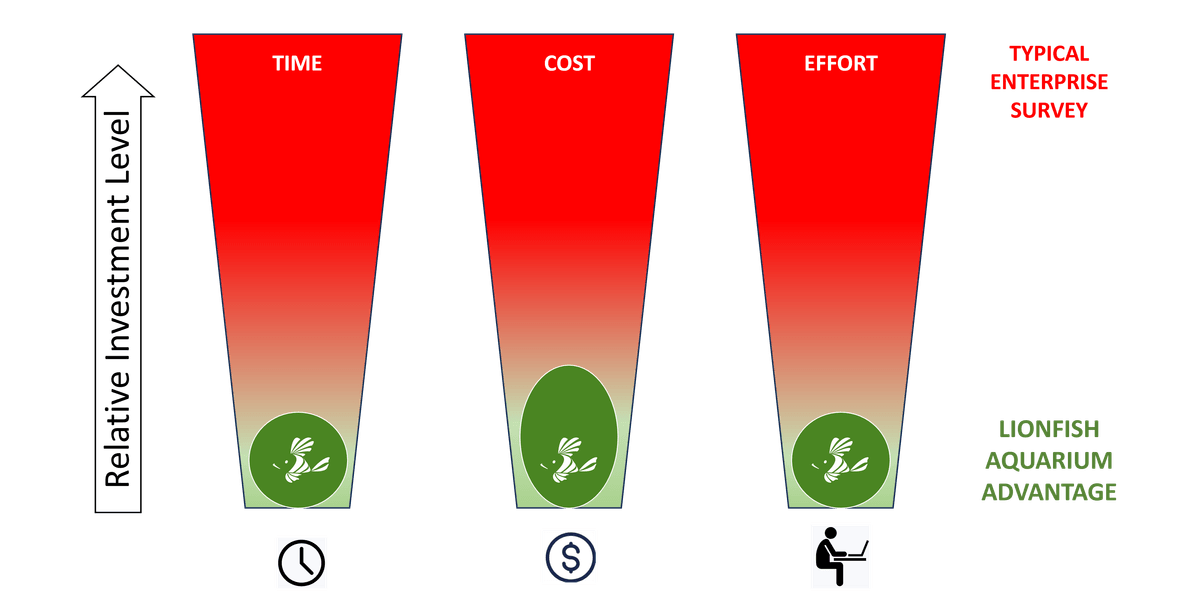Analyst surveys are a necessary evil in the IT industry. Every year, vendors carve out weeks—sometimes months—of staff time to chase better placement in the latest Magic Quadrant or Wave. But what gets overlooked is the sheer weight of time, cost, and effort required—and the question of whether the outcome still reflects the market by the time it’s published.
Time: The Six-Month Lag
In theory, an analyst survey is a snapshot of the market. In practice, it’s more like a time-lapse photo. Lead times at major firms can now stretch to six months or longer. That means the product positioning you see in the final chart may already be a half-year out of date. For fast-moving markets—cybersecurity, AI, cloud—it’s a serious credibility problem.
A competitive ranking is supposed to be “at the moment”—never the past, and never the future. But if the “moment” takes half a year to capture, the output becomes more of a historical artifact than a market guide.
Cost: Hidden and Heavy
The visible costs are large enough—analyst subscriptions, consulting support, dedicated survey staff—but the hidden costs bite deeper:
- Product managers pulled off roadmap work to draft answers.
- Sales engineers distracted from closing deals to supply data.
- Marketing managers juggling multiple revisions and analyst calls.
For companies participating in multiple ranked surveys, the imbalance becomes absurd: more time spent on surveys than on running the business.
By the time the submission is complete, the true bill isn’t just tens of thousands of dollars in fees—it’s hundreds of hours of lost momentum.
Effort: Teams Stretched Too Thin
Surveys don’t end when you hit “submit.” Follow-up questions, clarifications, and data checks pile on. Vendors often marshal whole teams across functions—PM, marketing, sales ops, finance—to support a process that can drag across quarters.
And even with all that effort, there’s little room to adapt. Survey updates are rare; even if you release a new feature or capability mid-cycle, it may not count toward this year’s evaluation. Analysts often discount capabilities that weren’t in place for a “reasonable period” during the evaluation year. Translation: even if you’re innovating fast, the system doesn’t always let you show it.
The Quality Trap
When the burden gets too heavy, corners get cut. That’s when marketing slicks and sales decks start getting copy-pasted into survey responses. Analysts hate it—and it shows. Instead of clear, evidence-backed answers, they see recycled boilerplate.
The other trap: too many cooks. Draft responses circulate through so many reviewers and revisions that the message gets hacked apart. By the end, the submission is longer, duller, and less useful to everyone involved—especially the analysts.
Execution and Vision: A Double Bind
Survey rankings aren’t just about features on paper. Analysts heavily weight:
• Execution: Did last year’s promised features actually ship, and did they move sales?
• Vision: Did you anticipate what customers would want before they knew they wanted it?
If you deliver, you’re rewarded. If you slip, your standing will drop—even if you’ve since corrected course. But the analysts won’t know if your survey doesn’t speak their language. And because you can submit early, Analysts get your best-quality responses when they have time to look in depth and come back if they have questions. You will not be buried in the crush of last-minute submissions.
The Lionfish Alternative
This is where the Lionfish model breaks the cycle. Instead of draining staff time on long survey processes, we use a curated, AI-plus-Advisor approach to assemble competitive intelligence continuously. It’s faster, lighter, and focused on the now—not six months ago.
Lionfish scans hundreds of references, ranks on more than 50 criteria, and—most importantly—fully exposes provenance. Every datapoint can be traced. That’s a level of detail no company can achieve with a DIY survey scramble, and it’s exactly why our clients can rely on our intelligence to be accurate, transparent, and defensible. Just prompting an AI is not going to deliver coherent, multidimensional, verified competitive analysis.
Lionfish clients get current market intelligence at a fraction of the time, cost, and effort. That means fewer all-hands fire drills to satisfy a survey—and more focus on the real goal: building, selling, and serving customers.
Visual: Time, Cost, Effort Compared

Relative comparison of analyst surveys versus the Lionfish approach. Traditional surveys are consistently high-burden in time, cost, and effort. Lionfish cuts the load dramatically while maintaining accuracy and transparency.
The message is down to this: You shouldn’t have to burn six+ months of work just to appear in a chart that’s already out of date. You deserve to be graded on the best possible and defensible competitive intelligence, and get the ranking you deserve!
About Lionfish
Lionfish Tech Advisors bring hundreds of years of collective global IT Advisor experience together to help companies realize their full potential. Every member is a recognized thought leader who has conducted extensive market readiness and performance studies of companies small and large across the globe. Our advisors help vendors maximize profits, expand their customer base, secure competitive advantage, and foster investor relations. We are your Trusted IT Growth Partners.
For more information, please visit https://www.lionfishtechadvisors.com/
